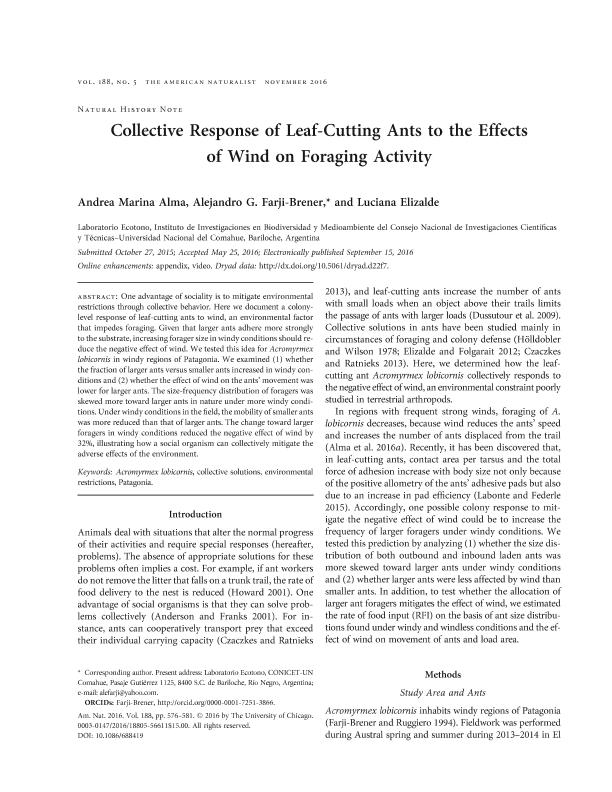Artículo
Collective response of leaf-cutting ants to the effects of wind on foraging activity
Fecha de publicación:
11/2016
Editorial:
University of Chicago Press
Revista:
American Naturalist
ISSN:
0003-0147
Idioma:
Inglés
Tipo de recurso:
Artículo publicado
Clasificación temática:
Resumen
One advantage of sociality is to mitigate environmental restrictions through collective behavior. Here we document a colony-level response of leaf-cutting ants to wind, an environmental factor that impedes foraging. Given that larger ants adhere more strongly to the substrate, increasing forager size in windy conditions should reduce the negative effect of wind. We tested this idea for Acromyrmex lobicornis in windy regions of Patagonia. We examined (1) whether the fraction of larger ants versus smaller ants increased in windy conditions and (2) whether the effect of wind on the ants’ movement was lower for larger ants. The size-frequency distribution of foragers was skewed more toward larger ants in nature under more windy conditions. Under windy conditions in the field, the mobility of smaller ants was more reduced than that of larger ants. The change toward larger foragers in windy conditions reduced the negative effect of wind by 32%, illustrating how a social organism can collectively mitigate the adverse effects of the environment.
Archivos asociados
Licencia
Identificadores
Colecciones
Articulos(INIBIOMA)
Articulos de INST. DE INVEST.EN BIODIVERSIDAD Y MEDIOAMBIENTE
Articulos de INST. DE INVEST.EN BIODIVERSIDAD Y MEDIOAMBIENTE
Citación
Alma, Andrea Marina; Farji Brener, Alejandro Gustavo; Elizalde, Luciana; Collective response of leaf-cutting ants to the effects of wind on foraging activity; University of Chicago Press; American Naturalist; 188; 5; 11-2016; 576-581
Compartir
Altmétricas




